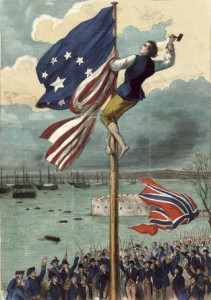 Hey, America, happy birthday! Two hundred and forty-three, right? That’s a lot of candles dancing on the head of one cake, but I trust you’ll manage. We just want to wish you all the best—sorry, what’s that? It’s not the birthday of the United States? Huh? So what is it? Oh, it’s the independence of the Colonies from Great Britain that took place in 1776. So when was the US born? Thirteen years later, in 1789, when George W. the First took office? First independence, then coming into being. I get it. It’s like starting with your bar mitzvah, then 13 years later getting born. That makes sense.
Hey, America, happy birthday! Two hundred and forty-three, right? That’s a lot of candles dancing on the head of one cake, but I trust you’ll manage. We just want to wish you all the best—sorry, what’s that? It’s not the birthday of the United States? Huh? So what is it? Oh, it’s the independence of the Colonies from Great Britain that took place in 1776. So when was the US born? Thirteen years later, in 1789, when George W. the First took office? First independence, then coming into being. I get it. It’s like starting with your bar mitzvah, then 13 years later getting born. That makes sense.
Well, Happy Whatever it is you guys are celebrating. July 4th mostly connotes Entebbe for me, but I’m always willing to join a party. And Momma taught me you don’t come to a party without a gift, so here’s ours – a very lovely James Taylor song as performed a cappella by The Swingle Singers, ‘On the 4th of July’.
In August, 1963, I was spending my summer vacation before the tenth grade staring at the albums in Neumark’s Record Store in Westsomething Shopping Center across the street from Woodward HS in Cincinnati. This is what I saw on the Bestsellers rack:
I yawned (having slept only 13 hours that night). Then I saw this:
I stopped yawning. “’Bach’s Greatest Hits’. That’s funny.” Then I peered more closely and saw that the Baroque musicians in the engraving were wearing shades. Cool, man. And I read the blurb “A unique vocal jazz treatment of Johann Sebastian Bach by the creative Swingle Singers.” Wow, really cool. So I shelled out my $2.99 (plus 12¢ sales tax) and spent the next few years listening to that album about as much as I listened to The soon-to-appear Beatles.
 It was a revelation, eight voices swinging Bach note for note, accompanied by string bass and a brush of drums. The album was for me both a revelation and an education. I learned to sing bass by listening closely, hour after hour after hour. I literally wore out the album. It was the beginning of my lifelong love of Bach, and it still sounds fine to me today. When I played it for Mr. Lang, he immediately fell for it, brought us ‘Choral No.1‘ to sing, and gave me as a reward the finger cymbal solo (Ding!).
It was a revelation, eight voices swinging Bach note for note, accompanied by string bass and a brush of drums. The album was for me both a revelation and an education. I learned to sing bass by listening closely, hour after hour after hour. I literally wore out the album. It was the beginning of my lifelong love of Bach, and it still sounds fine to me today. When I played it for Mr. Lang, he immediately fell for it, brought us ‘Choral No.1‘ to sing, and gave me as a reward the finger cymbal solo (Ding!).
The Swingle Singers evolved from a group of singers formed by the fine cool jazz chanteuse Blossom Dearie (her real name). Working in Paris under the direction of tenor Ward Swingle (of Alabama and Cincinnati) and soprano Christine Legrand (Michel’s sister), they stumbled on a style that would open the ears and minds of many, leading in the short range to children such as Switched-On Bach (by Walter>Wendy Carlos, the first widely heard electronic music) and Jacques Loussier (piano jazz improvisations on Bach). In the long range, their style had a paradigmatic impact on crossover experimentation, the fun potential of classical music in popular contexts, vocal jazz and so much more.
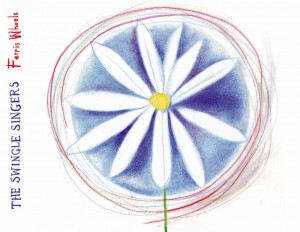 Here are two of my favorites from “Bach’s Greatest Hits”: Aria from Orchestral Suite No.3, a luscious, embracing recording I love dearly; and the soprano virtuoso piece Sinfonia from Partita No.2, with Christine Legrand reminding us just how much of a genius JSBach was. I won’t tell you how often I try to sing this soprano solo when I’m alone in the car.
Here are two of my favorites from “Bach’s Greatest Hits”: Aria from Orchestral Suite No.3, a luscious, embracing recording I love dearly; and the soprano virtuoso piece Sinfonia from Partita No.2, with Christine Legrand reminding us just how much of a genius JSBach was. I won’t tell you how often I try to sing this soprano solo when I’m alone in the car.
The Swingle Singers recorded and performed extensively and successfully for the next decade, always impeccable, but never reaching the excitement levels of that very first album. In 1973, the original French group disbanded. Ward Swingle formed a new group in London called Swingle II, then The Swingles, then The New Swingle Singers, then simply The Swingle Singers, aka The Swingles, and they’ve been swingling ever since. They’ve recorded a million albums–the old classical formula, folk songs, Christmas albums, a Beatles tribute, more Christmas albums–all of it faultless, blandly perfect, none of it groundbreaking.
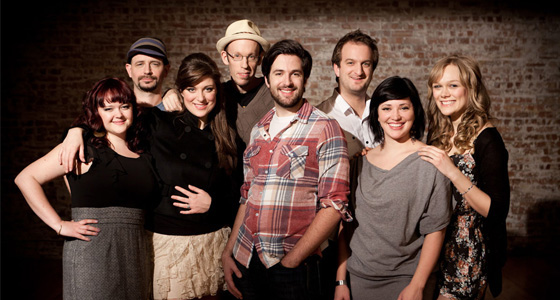 In 2007 they began to metamorphose into a ‘New A Cappella’ group with the CD “Beauty and the Beatbox”, applying hip new vocal percussion to a mix of classics and modern pieces. Here’s their take on the Mexican standard Cielito Lindo. In 2009 this new approach ripened into “Ferris Wheel”, a charming collection of their own arrangements of pop songs. It includes songs from those artists most frequently recorded by New A Cappella groups – Bjork, Stevie Wonder, Brian Wilson (some other time I’ll tell you about my obsession about Brian Wilson being sung a cappella), Joni Mitchell, Sting, John & Paul, Nick Drake and James Taylor.
In 2007 they began to metamorphose into a ‘New A Cappella’ group with the CD “Beauty and the Beatbox”, applying hip new vocal percussion to a mix of classics and modern pieces. Here’s their take on the Mexican standard Cielito Lindo. In 2009 this new approach ripened into “Ferris Wheel”, a charming collection of their own arrangements of pop songs. It includes songs from those artists most frequently recorded by New A Cappella groups – Bjork, Stevie Wonder, Brian Wilson (some other time I’ll tell you about my obsession about Brian Wilson being sung a cappella), Joni Mitchell, Sting, John & Paul, Nick Drake and James Taylor.
‘New A Cappella’ is a world I’m deeply involved in. It was more or less invented 25 years ago by the Swedish quintet The Real Group, who elevated vocal jazz from singing harmony above the accompaniment (Hi-Lo’s, Singers Unlimited, Lambert Hendricks & Ross) to ‘singing the arrangement’ a cappella. It’s a fascinating world of music, most highly evolved in Scandinavia. I’ve written about it lots of times and participated in a Modern AC festival every year for the past decade (Sweden, Denmark, Italy, London). For me, these festivals are a life-changing experience musically, and even personally to no small degree–lots of lovely people from around the world embracing each other through music. C’mon Cindy, c’mon Sue, get on a plane and join us. You’ll be glad you did, I promise you.
What’s so good about The New A Cappella? Well, here, I’ll show you. There are a couple of songs from The Swingles’ “Ferris Wheel” that are among the very best of what the genre has to offer. Here’s their version Nick Drake’s ‘River Man’. It’s been recorded often–I even wrote an entire SoTW about it. The Swingles’ version shows just how effectively an AC treatment can elicit from a well-known pop song new understandings, new beauties. And here’s our SoTW, the oh-so charming James Taylor song ‘On the 4th of July’.
 Ain’t it sweet? It’s from James’ last album of originals, “October Road” (2002). Here’s the original. It’s such shame that James has stopped recording new original material, but we don’t begrudge him. We appreciate what he has done. Like this one, a love song for mature audiences. It’s about a man in his mid-50s starting up with a lady he’s known for a long time.
Ain’t it sweet? It’s from James’ last album of originals, “October Road” (2002). Here’s the original. It’s such shame that James has stopped recording new original material, but we don’t begrudge him. We appreciate what he has done. Like this one, a love song for mature audiences. It’s about a man in his mid-50s starting up with a lady he’s known for a long time.
It’s full of the irrepressible anticipation of a new relationship tempered by the wariness born of a lifetime of bumps and bounces and disappointments. It’s a jolly, inexplicable mix of Colonial America and music on the radio and the sly grin of still getting aroused by what may happen when she comes down for the fireworks. Love and and independence and rebirth, the sort of story James tells so well. So happy 4th of July to everyone, everywhere.
Shall I tell it again, how we started as friends who would run into one another now and again
At the Yippee Cai O or the Mesa Dupree or a dozen different everyday places to be?
I was loping along, living alone, we were ever so brave on the telephone.
“Would you care to come down for fireworks time? We could each just reach, we could step out of line.”
And the smell of the smoke and the lay of the land and the feeling of finding one’s heart in one’s hand
And the tiny tin voice of the radio band singing “Love must stand,” love forever and ever must stand.
Unbelievable you, impossible me, the fool who fell out of the family tree
The fellow that found the philosopher’s stone deep in the ground like a dinosaur bone
Who fell into you at a quarter to two with a tear in your eye for the Fourth of July
For the patriots and the minutemen and the things you believe they believed in then
Such as freedom, and freedom’s land and the kingdom of God and the rights of man
With the tiny tin voice of the radio band singing “love must stand”
Love forever and ever must stand and forever must stand.
Oh the smell of the smoke as we lay on the land, and the feeling of finding my heart in my hand
With the tiny tin voice of the radio band singing “love must stand,” love forever and ever must stand
On the fourth of July.
If you enjoyed this post, you may also enjoy:

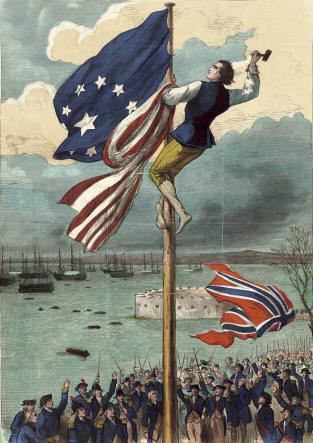

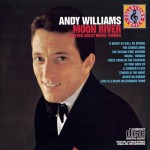
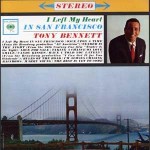
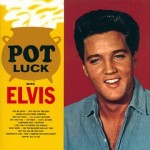
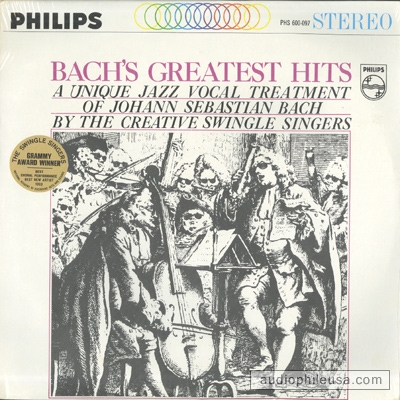




Interesting… Keep up the good work, mesh 🙂
What a great combination: Bach, A Capella, Sweet baby James, Swingle Singers and the Real Group.
My ears are smiling!
Sometimes your posts are just phenomenally wonderful. This is one of those.
Thank you, thank you !
What is doing with your play ?
Great essay, great atmosphere of discover, great music. Thanks for the trip!
One of my favorite Taylor tunes. Odd, though, that while his performance has a lot of close harmonies and near dissonances in the back up vocals and instrumentation the a cappella version (which you might expect would mine those features) is played more straight-up, melody dominating.
The smell of smoke and the feeling of finding one’s heart in one’s hand….I can’t love this enough, both the original and the Swingles cover. Finding love again and being able to appreciate all the little nuances.
Delicious music.
Thank you.
Excellent post, very informative on the Swingles, and their interpretation of a sweet JT song.
“Westsomething Shopping Center”? Where did you get that? Don’t you and your great emotional memory remember the word “Swifton”?
Aw, many, it’s been 50 years!
Jeff I found John Martyn by first listening to his two albums w/ his then wife Beverly; Stormbringer and Road to Ruin, the latter recorded in Woodstock.
A Canadian, I was living in Italy in 1970 with no access to Top 40 radio [sometimes Radio Luxembourg at night.] I would go to Genoa and play any albums I wanted at a record store and buy what I liked. I found Arthur Lee’s ‘Love’ that way as well. I still pat myself on the back for my prescient good taste.
There’s a great satisfaction in realizing you weren’t a total idiot at that age. At least in musical tastes.